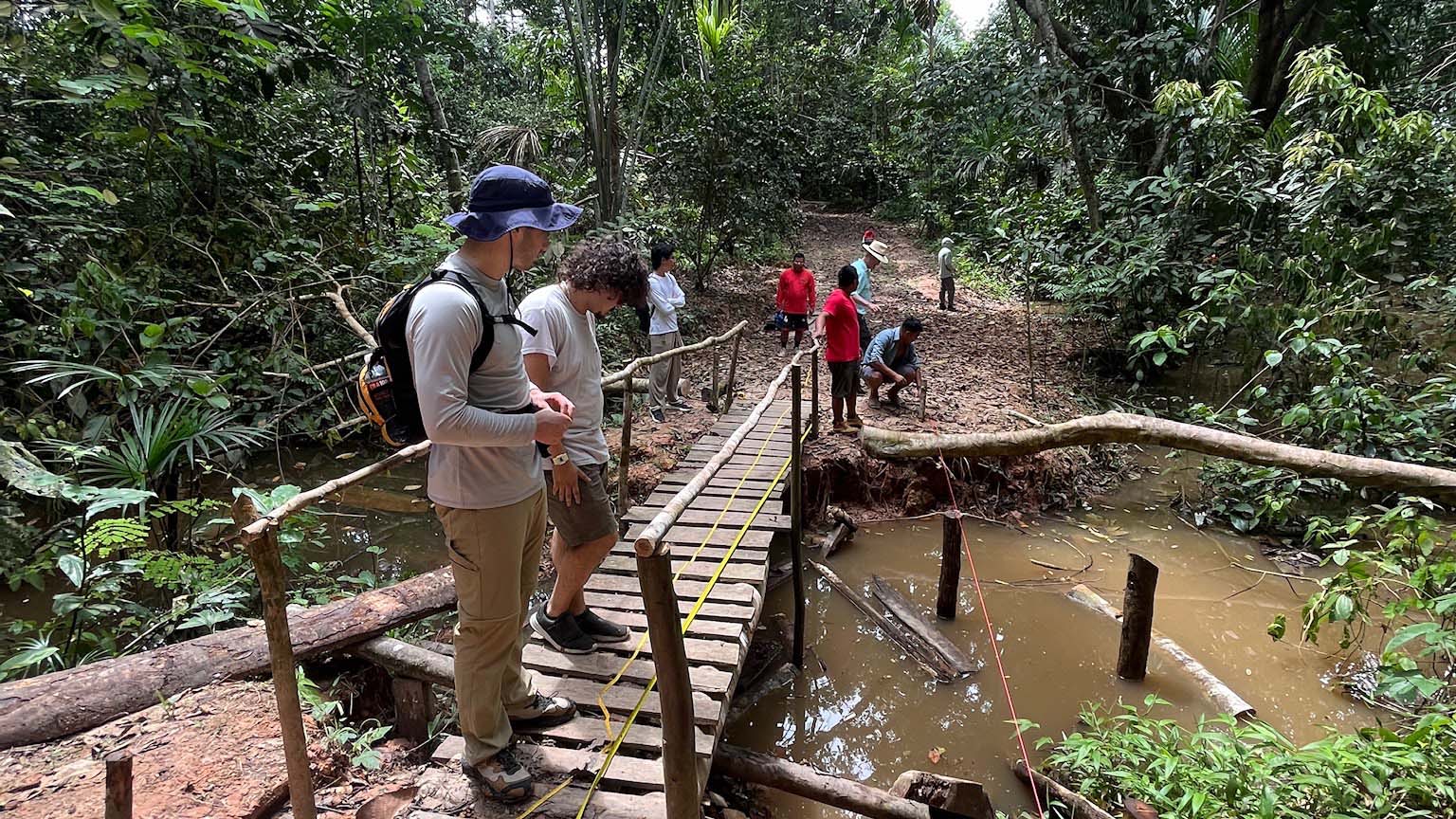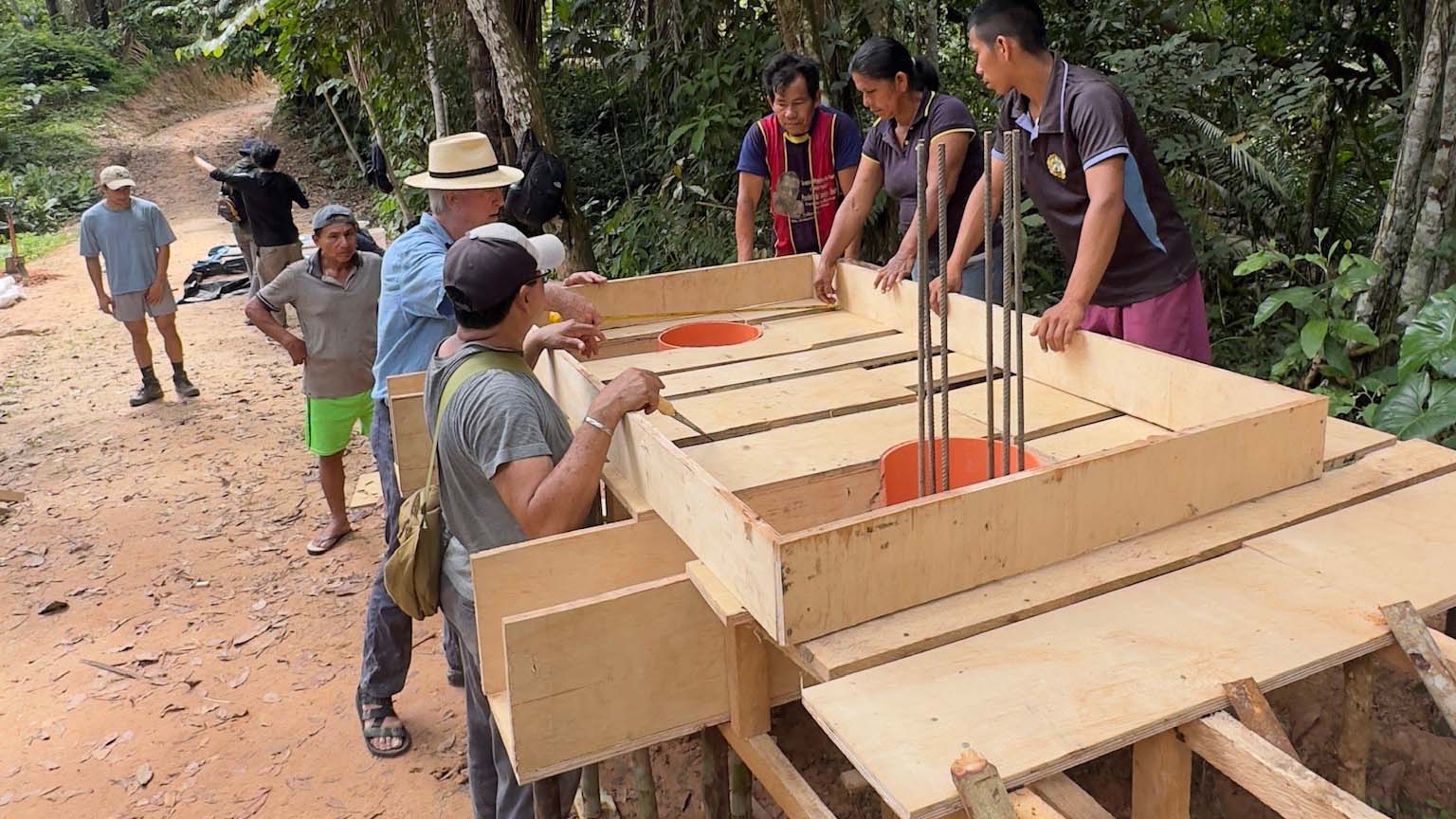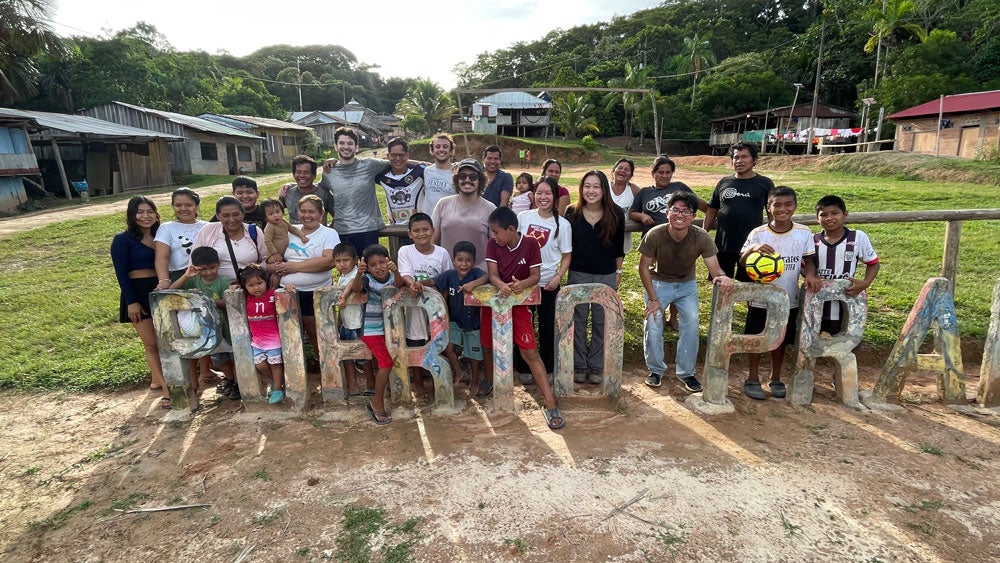The Rice University student chapter of Engineers Without Borders (EWB), consisting of undergraduate students and recent graduates from the George R. Brown School of Engineering and Computing, has initiated a project to construct two concrete bridges in Prado, a village in northeastern Peru. The bridges will provide a sustainable solution to address seasonal flooding of the Marañón River, which often isolates the community. The project is currently in the assessment and design phase, with construction scheduled for completion in August 2026.
Engineers Without Borders (EWB) is a national organization focused on engineering solutions to equip communities across the globe. Rice students involved in the Peru project — Kristal Hanson, Siena Yiin, Benjamin Gomez, Owen Jin, Griffin Arndt, Lilian Zhang, Isaac Al-Ramahi, Tina Nguyen, Alejandra Jimenez and Isabelle Chang — are either current juniors or seniors in civil and environmental or electrical engineering, or recent graduates of those programs.
The team is advised by Rice faculty member Pedro Alvarez and mentored by Mark Illian and Steven Skeele of EWB’s Central Houston Professional Chapter, both of whom have experience implementing engineering projects in this region of Peru. Jose Valles, an employee of Amazon Promise, a U.S. non-profit that has provided critical healthcare in northeastern Peru for over three decades, serves as a liaison to connect the students with the local community, coordinate trips, and identify resources.
“Our goal is to give the roughly 100 residents of Prado — a remote village in Peru — reliable, safe, year-round access to essential services like healthcare and markets, and support them in achieving greater social and economic independence,” said Hanson, the President of Rice EWB.
This summer, six team members and their mentors, Illian and Skeele, traveled to Peru for a site visit. The trip was foundational in building trust with area residents and identifying affordable, practical solutions to recurring seasonal flooding. The students held several meetings with community leaders and residents to better understand the challenges the community faces and discuss how new bridges could improve daily life, particularly by enhancing access to healthcare and strengthening the local economy.
“After speaking with the locals, we realized that for remote communities like Prado, a bridge is not just a convenience, it’s a critical lifeline,” said Yiin, co-project lead for the Peru team. “The wooden bridges they use now are unreliable. They rot quickly, need constant repairs and are completely unusable when the river floods each year.”

Without sturdy bridges, the locals are forced to cross the river using boats, which comes with its own challenges. “The boats are expensive to own, and most families cannot afford them. This limits their mobility and independence, especially during medical emergencies. The few who do own boats have to pay high fees to park their boats in the port of Nauta, impeding their ability to sell their produce or goods in the markets there. Nauta is the nearest large town with medical services and commerce,” said Jin, co-project lead for the Peru team.
“Moreover, in the dry season, the river’s low water level creates unexpected turbulence that flips boats and drowns passengers. Locals recounted situations where boats carrying sick children to the hospital have sunk, turning medical emergencies into lifelong tragedies. They are optimistic the planned bridges will provide a critical alternate route to safely access medical care and markets in Nauta,” said Al-Ramahi, the lead for calculations and substructures sub team.
During their assessment of the four areas that flood frequently, the students found poor drainage was the primary cause at two sites. The Rice EWB team procured and worked alongside local residents to install two 12-inch pipes, a low-cost solution that immediately resolved flooding in those locations.
“This on-the-ground discovery and problem-solving has halved the number of new bridges the team now needs to design and build, dramatically reducing the project's complexity and cost, critical considerations when implementing projects in remote, low-resource areas like Prado,” said Gomez, the co-lead for the calculation and substructures sub team. “During the visit, we also built a small-scale concrete prototype of one of the bridges to assess technical and practical feasibility.”

“The Peru bridge project is a ‘win-win’—it gives us a hands-on opportunity to apply the concepts of engineering design and analysis, engineering economics, project management, teamwork, and communication we learn at Rice to solve challenging real-world problems, while providing an under-resourced community free access to such expertise and resources,” Yiin said.
The critical insights that the Rice EWB team gained by visiting and working alongside the community in Prado has reshaped the project, making it more efficient, affordable, and impactful. Currently, they are optimizing and finalizing engineering designs for the final phase of construction.
“We are thankful to our EWB mentors, advisors at Rice, and Amazon Promise for guiding us throughout this project and for providing us with local contacts and resources. We are also grateful to our major donors, GSI Environmental, the West University Rotary Club, Rice alumni, the EWB Houston Professional Chapter, and Shell for supporting this project,” Hanson said. “In addition, three members of our team received the Dick and Mary Ellen Wilson Engineering Student Enhancement Award from Rice’s School of Engineering and Computing, which they generously donated to EWB to cover trip costs.”

